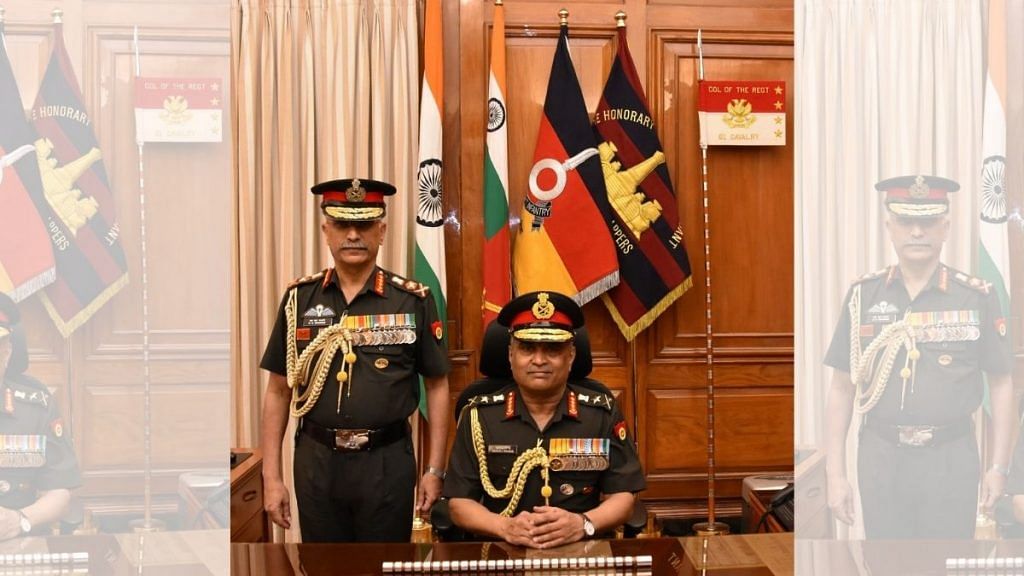New Delhi: Gen. Manoj Pande created history Saturday as he became the first officer from the Corps of Engineers to take over as the Chief of Army Staff (COAS) — a major departure from the Army’s usual practice of appointing those from the Infantry, Artillery, and the Armoured Corps to the position.
While Gen. Pande eases into his new post, the one issue that will continue to be his main focus area is China, something he dealt with closely as the Eastern Army Commander.
Sources in the defence and security establishment said China’s muscle-flexing approach along the sensitive Line of Actual Control (LAC) is going to continue, and hence the new chief takes over with his plate already full.
As the Eastern Army Commander, Gen. Pande led the Army’s response in the eastern sector of the LAC with a special focus on technology and new deployment patterns.
Under him, the Eastern Command saw large-scale induction of technology, including drones, and new fire-support systems that were aimed at thwarting any possible plan of the Chinese to stir up tensions like they did in Ladakh, where the two armies have been engaged in a standoff since 2020.
His tenure also saw change in deployment patterns and the setting up of specialised coordination centres, all of which were replicated in the Northern sector too, which saw live action.
Although induction and deployment of men and equipment were key areas, Gen. Pande also focused on infrastructure buildup under his Area of Responsibility (AoR)
“He is an old China hand and brings with him a larger perspective,” a source told ThePrint Friday, pointing to the appointments Pande has held in his 39 years of service.
He has commanded an Infantry Brigade along the LoC, a Mountain Division in the high-altitude area of western Ladakh, and a Corps in the Eastern sector.
His staff exposures include Brigade Major of a Mountain Brigade in the northeast, Colonel Q of a Mountain Division in high-altitude area, and Brigade General Staff (Operations) at Headquarters Eastern Command.
Also Read: Chinese Navy is the largest in the world, but not the best. Don’t underestimate it though
Focus on modernisation
Sources said another area that will be in focus during General Pande’s tenure is modernisation, especially in terms of long-term plans.
Warfare, the sources added, was constantly changing, and it was important for the Army to learn from the latest conflicts and understand the emerging technology that is in play.
“The modernisation of the Army is extremely critical. There has to be a fine balance between what is needed now and what is needed in the future. Not everything should be about matching the enemy, but we should be thinking long-term and outmatching the enemy,” a source said.
Another big area of focus would be manpower rationalisation, something which the Narendra Modi government is very keen on.
The Army is currently about 1.2 million strong and the government is keen on having leaner and more technology-oriented forces.
The lack of recruitment rallies over the last two years has already resulted in a shortfall of about 1.3 lakh soldiers.
“However, the manpower rationalisation is much larger and an effort would be made to ensure that there is a fine balance. Otherwise, it will end up affecting the operational capacity,” another source said.
The People’s Liberation Army (PLA) of China was always regarded as the largest army in the world with an approximate strength of two million soldiers but they have now brought the strength below a million. It is now the third-largest, behind India, which is at No. 1 in terms of actual numbers.
Chinese president Xi Jinping had in 2015 announced the downsizing of the PLA to make the force leaner and more reliant on modern warfare.
The reform, thus far unprecedented, began in November that year. The country’s focus shifted to technology for cyber and space and futuristic weapons, and it began laying greater emphasis on building up the PLA’s Navy and the Air Force.
(Edited by Uttara Ramaswamy)
Also Read: Army gets 1st indigenous upgrade for AK-47s as Bengaluru-based firm delivers kits
